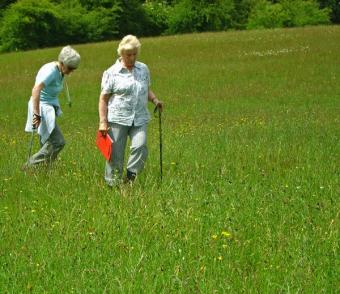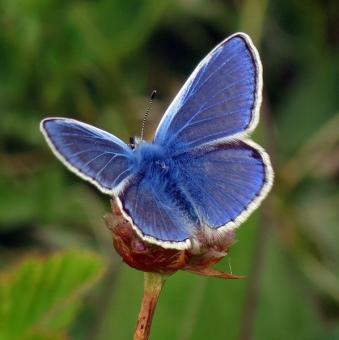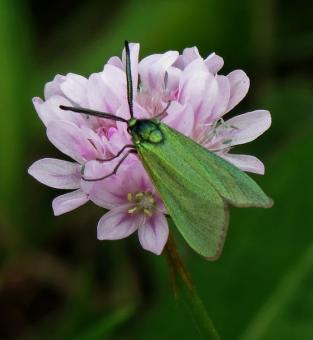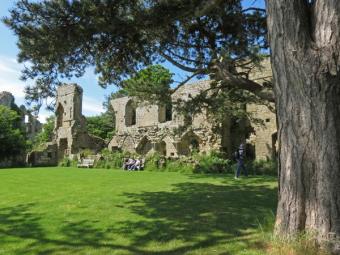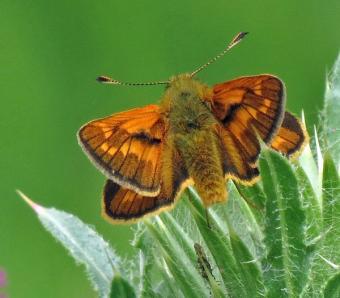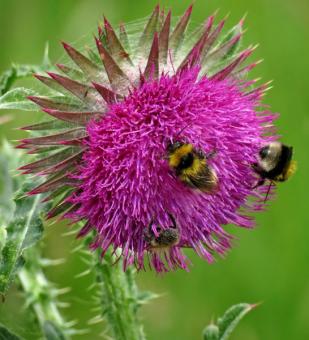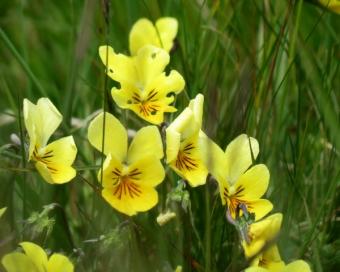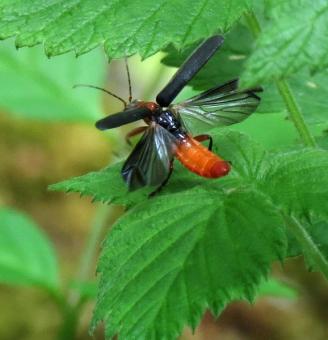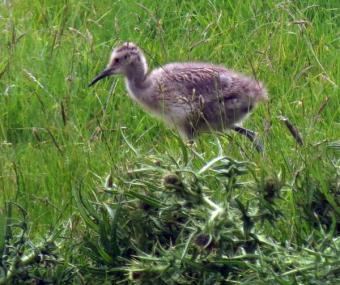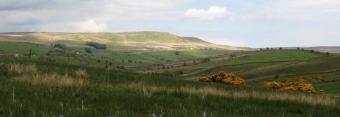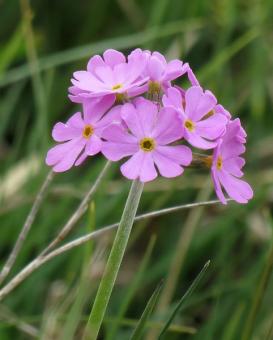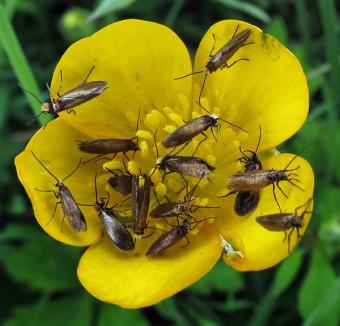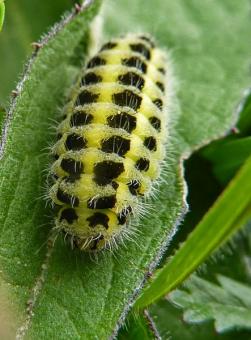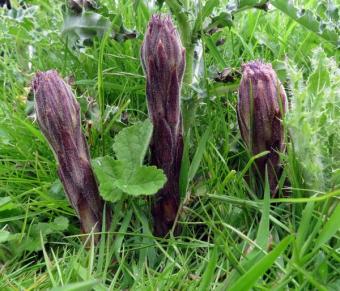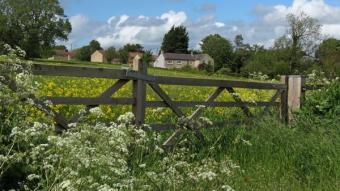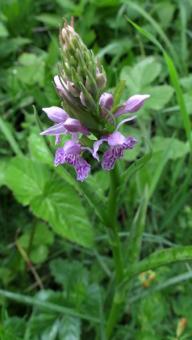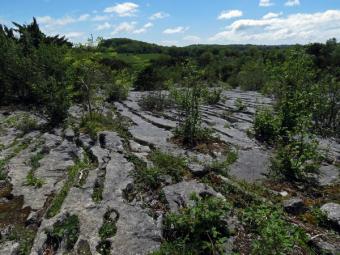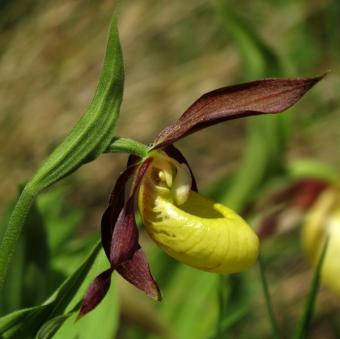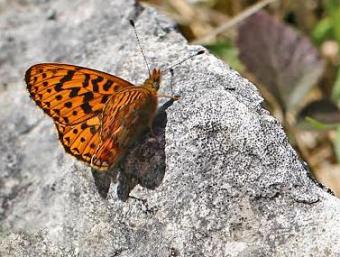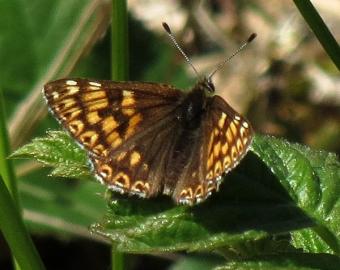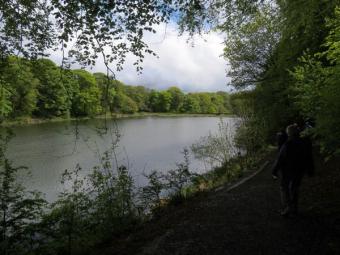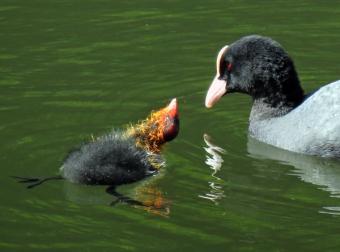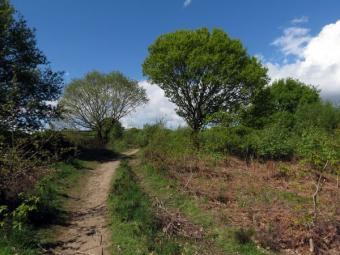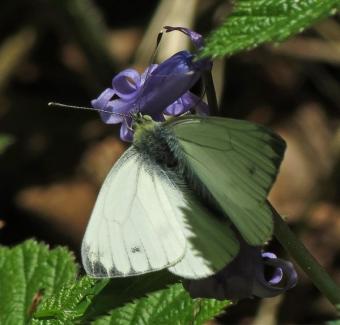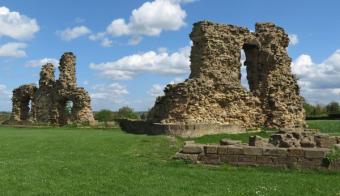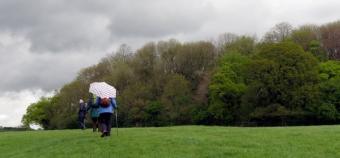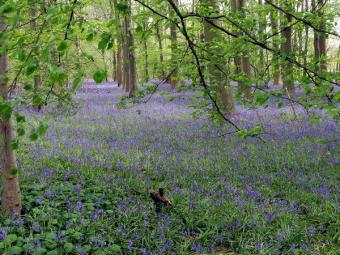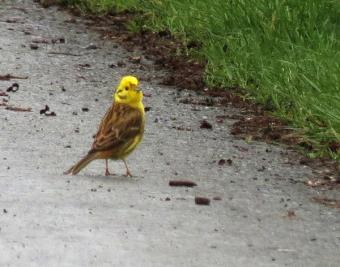WFV, Extended Day Out - Sheffield Sites, 7th July 2015
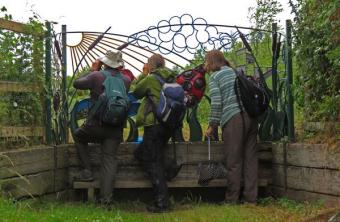 Looking At The Lake
Looking At The LakeDespite the weather forecasts to the contrary, we enjoyed warm sunshine for much of the day, although we did have to put up with a strong breeze, particularly at site 2 which was more exposed. Apart from one brief shower whilst visiting site no. 1 it remained dry throughout. We were therefore lucky enough to see plenty of butterflies at all 3 sites.
We began at Blackburn Meadows, nr Rotherham after first calling in at Magna for the obligatory toilet stop. We were treated to the sight of several fresh Small Tortoiseshells on the extensive brambles by the parking area. A leisurely stroll around this compact reserve also revealed Ringlets, Meadow Browns, Whites, Gatekeeper and Large Skipper.
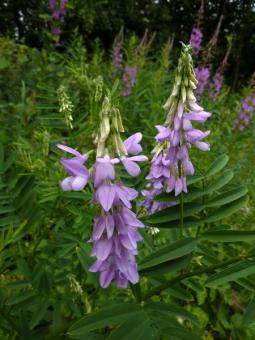 Goat's RueMy abiding memory of the site will be the Goat’s Rue, one of our most attractive wildflower - introductions. This plant was growing in abundance all over the site. As we were about to leave we were treated to the spectacle of a heron being repeatedly mobbed by an agitated Lapwing.
Goat's RueMy abiding memory of the site will be the Goat’s Rue, one of our most attractive wildflower - introductions. This plant was growing in abundance all over the site. As we were about to leave we were treated to the spectacle of a heron being repeatedly mobbed by an agitated Lapwing.
Our next port of call was Centenary Riverside, a reclaimed spoil heap. This was confirmed by the array of spectacular garden escapes. We were unable to ID these however, as they were not wildflowers! We did though record Common Centaury, Yellow-wort and Lady’s Bedstraw. The sun was now out and we all chose a rock to sit on to eat our lunches, apart from Robert who decided to lie in the long grass and enjoy the warmth; he didn’t move from his resting spot until we were ready to leave! This is not a tranquil site as there is incessant banging and clanging from the surrounding heavy industry plus a nearby rail line.
Additional Lepidoptera seen were Comma, Red Admiral, Green-veined White, Small Heath and Narrow-bordered Five-spot Burnet. The upper pond was an ideal place to observe dragonflies and on the wing that day were Emperors, Four-spotted and Broad-bodied Chasers, Common Blue, Azure and Blue-tailed damselflies and Banded Demoiselles. Vera got over excited and somehow managed to hurl her plant book into the water. 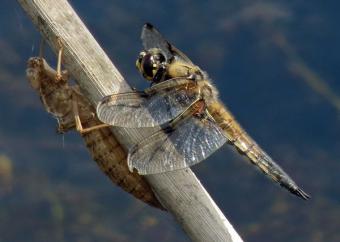 Four Spotted Chaser and ExuviaI held Julia’s hand as she leant over to retrieve the floating item. It came out of the water oddly not too worse for wear. We had been watching a 4 spot chaser continuing to return to an isolated, dessicated reed and Julia saw an exuviae part way down the stem.She thought here was an ideal photo opportunity so went off to locate our top photographer. Within minutes she returned with Sue and after several failed attempts the shot was in the bag. Well done Sue and Julia.
Four Spotted Chaser and ExuviaI held Julia’s hand as she leant over to retrieve the floating item. It came out of the water oddly not too worse for wear. We had been watching a 4 spot chaser continuing to return to an isolated, dessicated reed and Julia saw an exuviae part way down the stem.She thought here was an ideal photo opportunity so went off to locate our top photographer. Within minutes she returned with Sue and after several failed attempts the shot was in the bag. Well done Sue and Julia.
We had to drive through various districts of Sheffield (via Magna again) in order to reach our final site of the day ‘Carr House Meadows’. We arrived at this steep-sided area of unimproved meadows at 16:15.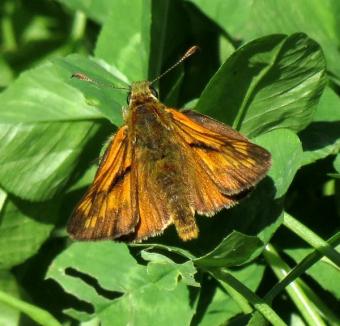 Large Skipper The sun was still shining and Meadow Browns were frequent, also a few Silver Y moths. The grassland was full of clovers, Yellow Rattle and Ox-eye daisies plus a few Common-spotted and Southern Marsh Orchids. Five of the group later descended towards Morehall Reservoir. This was largely empty of birds apart from a couple of Grebes and one Cormorant. A delightful spot however.
Large Skipper The sun was still shining and Meadow Browns were frequent, also a few Silver Y moths. The grassland was full of clovers, Yellow Rattle and Ox-eye daisies plus a few Common-spotted and Southern Marsh Orchids. Five of the group later descended towards Morehall Reservoir. This was largely empty of birds apart from a couple of Grebes and one Cormorant. A delightful spot however.
Shortly after 6pm we set off for our evening meal at the Sovereign at Shepley; a Vintage Inns establishment. By this time it was pouring down but too late to have spoiled our day. The food was very good.
Thanks go to Julia who not only planned the whole day but also did all the driving.
John Gavaghan

